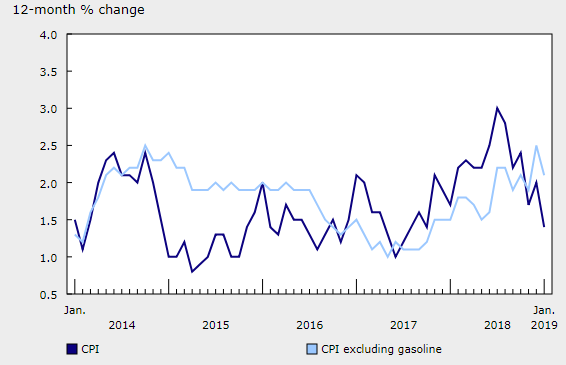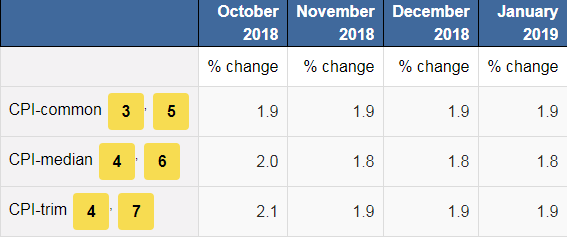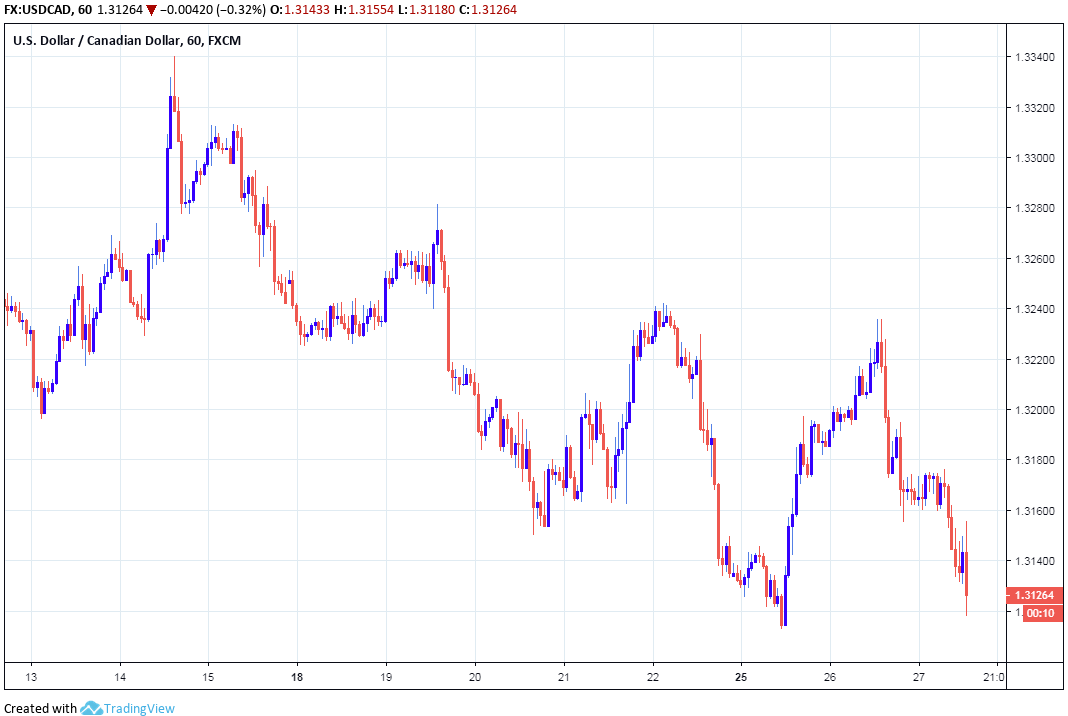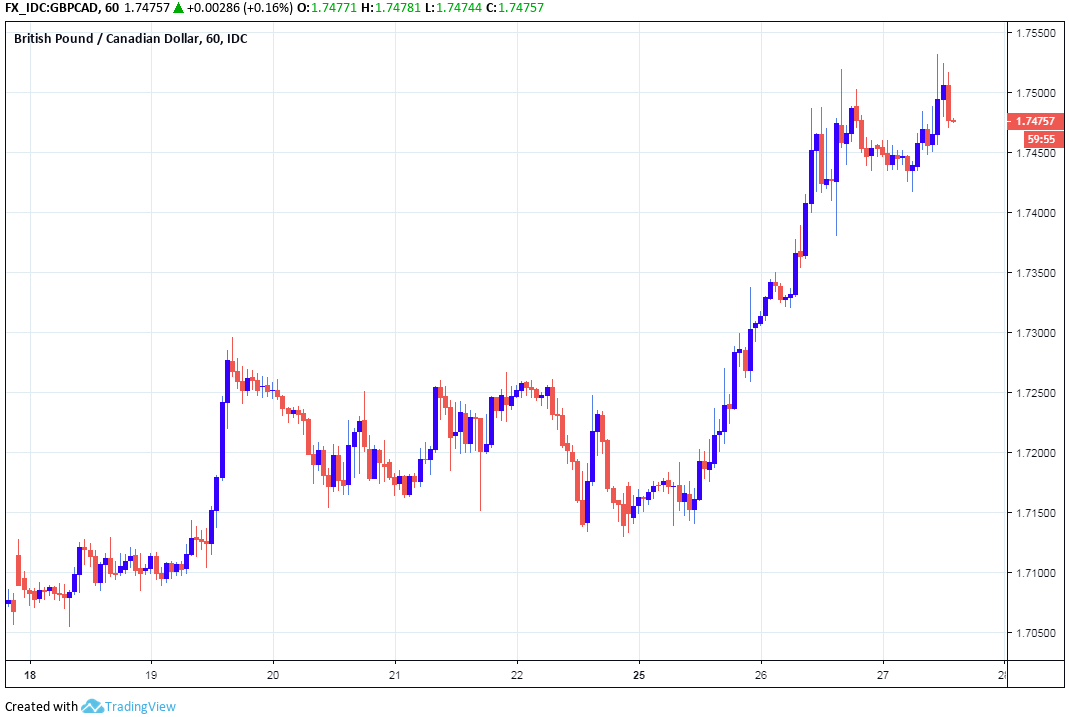Canadian Dollar Extends Gains after Data Shows Inflation Remained Elevated in New Year
- Written by: James Skinner

Image © Pavel Ignatov, Adobe Stock
- CAD extends gains after January CPI inflation data taunts BoC.
- Core inflation remains elevated, alongside BoC's trimmed-means.
- Markets may now reconsider bearish bets against the BoC and CAD.
The Canadian Dollar extended gains Wednesday after official data showed inflation remaining elevated early in the New Year which, if sustained, could be enough to draw the Bank of Canada (BoC) off the sidelines later in 2019.
Canada's consumer price index fell to 1.4% in January, down from 2% previously, after a steep fall in the cost of gasoline at filling stations and methodology changes to the measurement of air fares and telecoms services weighed on headline inflation.
However, after excluding food and energy from the goods basket, inflation came in at 1.9% during January. That's close to the BoC's target of 2%. Furthermore, all of the BoC's trimmed mean measures of inflation were unchanged during the month, also remaining close to 2%.
Statistics Canada says that when only gasoline price changes are excluded from the goods basket, inflation was 2.1% and even higher than all of the other measurements suggest. This could be enough to persuade markets to reconsider bets implying the BoC won't hike rates this year.

Above: Canadian CPI and Canadian CPI excluding gasoline (light blue). Source: Statistics Canada.
"The dive in the 12-month inflation rate from 2.0% to 1.4% includes the weakness in energy prices vs. year ago levels, with the core measures, hovering in the 1.8%-1.9% range, suggesting that the underlying trend is still within a hair of the Bank of Canada's 2% target," says Avery Shenfeld, chief economist at CIBC Capital Markets.
Markets care about the inflation data because it has significant influence over Bank of Canada interest rate decisions, which are the raison d'être for most moves in exchange rates.
Changes in rates are normally only made in response to movements in inflation but impact currencies through the push and pull influence they have on capital flows as well as their allure for traders.

Above: Canadian trimmed-mean inflation measures. Source: Statistics Canada.
"We doubt the BoC will want to get too hawkish while the Fed is in wait-and-see mode, but today’s January CPI data could remind the market that the BoC could be looking for opportunities to hike," says Chris Turner, head of FX strategy at ING Group.
Canada's inflation outlook has been clouded of late by a double-digit decline in oil prices during the final quarter of 2019, which has been followed by a 20% increase in various crude oil benchmarks thus far in the New Year. This is is wreaking havoc on headline CPI numbers the world over.
However, the steady pace of the BoC's three trimmed mean measures of inflation shows that domestic price pressures remain elevated in Canada and could be enough to draw the BoC from the sidelines later this year if there is a sufficient pick-up in business investment and economic growth in the interim.

Above: USD/CAD rate shown at daily intervals.
The USD/CAD rate was quoted -0.34% lower at 1.3120 following the release after extending an earlier -0.18% decline. It's now down -3.5% for 2019.
The Pound-to-Canadian-Dollar rate was 0.13% higher at 1.7475 after paring an earlier 0.22% gain following the release. It's up just 0.44% this year.

Above: Pound-to-Canadian-Dollar rate shown at daily intervals.
The Bank of Canada said in January it will be more cautious about raising rates than earlier guidance suggested it would. The message was clear in that it will move more slowly than before.
But previously the bank said rates could rise to between 2.5% and 3.5% by early 2020, which led markets to believe as many as three rate hikes were in the cards for 2019 and explains why the Canadian Dollar fell so sharply between early December and the middle of January.
Governor Stephen Poloz said last Thursday, in a speech to the Chamber of Commerce of Metropolitan Montreal, that Canada's current 1.75% interest rate is still low and providing stimulus to the economy. He also said the path back to the neutral has become "less clear" amid multiple headwinds.
"The Bank of Canada still seems inclined to find an excuse to hike rates, with one final hike possible in Q3 after an oil production recovery shows up in temporarily better GDP prints. That will keep the Canadian dollar better bid, towards a 1.31 low for dollar-Canada this summer," says CIBC's Shenfeld, in a recent note to clients.
Pricing in the overnight-index-swap market implies an October 30, 2019 cash rate of 1.79%, which is barely any higher than the current 1.75% rate actual rate and suggests strongly that investors have a pessimistic view of the outlook for Canadian interest rates.
The above pricing means that if Shenfeld is right in forecasting a third-quarter rate hike from the BoC, then the Canadian Dollar could experience a boost during the months ahead as investors begin to recognise that another move from the bank is not far off.
However, Shenfeld also says that it won't be long after that until economic weakness and international uncertainties return to haunt the Canadian Dollar and force the central bank to the sideline again. He projects the USD/CAD rate will finish the 2019 year up at 1.34.
Not everybody shares the same view though, as some still hold a bullish outlook for the Canadian Dollar. Morgan Stanley is in the latter camp.
"We remain bullish on CAD on crosses such as against NZD," says Hans Redeker, Morgan's head of FX strategy. "The Canadian labor market continues to tighten, growth momentum looks firmer with wholesale trade, business confidence, and existing home sales all printing above expectations. More robust growth coupled with firm oil prices and a tight labor market should give the BoC sufficient reason to turn more hawkish, supporting CAD."
Redeker and Morgan Stanley have advocated that clients sell the NZD/CAD rate, targeting a move down to 0.84 over the coming weeks, which is the same thing as a recommendation to buy the Loonie. They are also forecasting that the USD/CAD rate will fall to 1.28 by year-end.
Time to move your money? Get 3-5% more currency than your bank would offer by using the services of foreign exchange specialists at RationalFX. A specialist broker can deliver you an exchange rate closer to the real market rate, thereby saving you substantial quantities of currency. Find out more here.
* Advertisement




